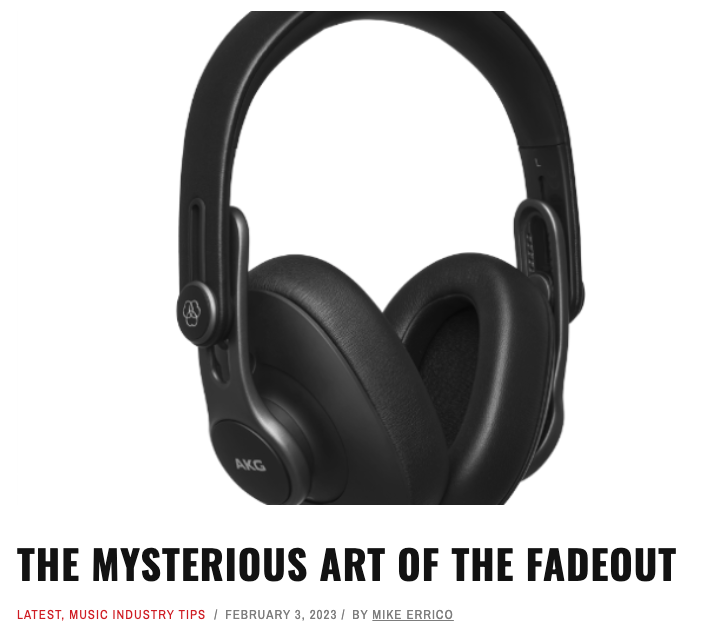Excerpted from Music, Lyrics, and Life.
The popular expression, “You never get a second chance to make a first impression,” has a less-celebrated corollary: You don’t get a second chance to make a last impression, either. A major songwriting challenge is how to construct those first and last impressions in order to bookend the musical universe writers have created.
Unlike artists who work in other forms (novels, paintings, etc.), songwriters have a tool that takes advantage of the audio medium: the fade out. Part technological, and part metaphorical, the fade out can imply continuity—the song goes on forever—as easily as loss—the song goes on forever without you. One reason a fade is so expressive is because it reintroduces us to the universal language of silence—fade outs remind us that, as in life, silence always gets the last word.
There’s just one problem: At the moment of this writing, fades are very out of fashion. I teach songwriting at several universities, and when a student of mine uses one, they get applause from classmates for the audacity. Fades are retro. They’re vintage. They’re even cinematic, which is actually true: the term “fade” is borrowed from film, which originated around the same time as recorded music. The gradual deprivation of sound in a fade out parallels the deprivation of sight when a scene “fades to black.”
In order to better understand why writers and producers choose to fade, I spoke with Jim Anderson, producer and sound engineer; former president of the Audio Engineering Society; multi-Grammy Award–winner; and nominee (along with partner Ulrike Schwartz) for this year’s Grammy for Immersive Audio Album, Jane Ira Bloom’s Picturing the Invisible: Focus 1.
Read the rest on Music Connection

